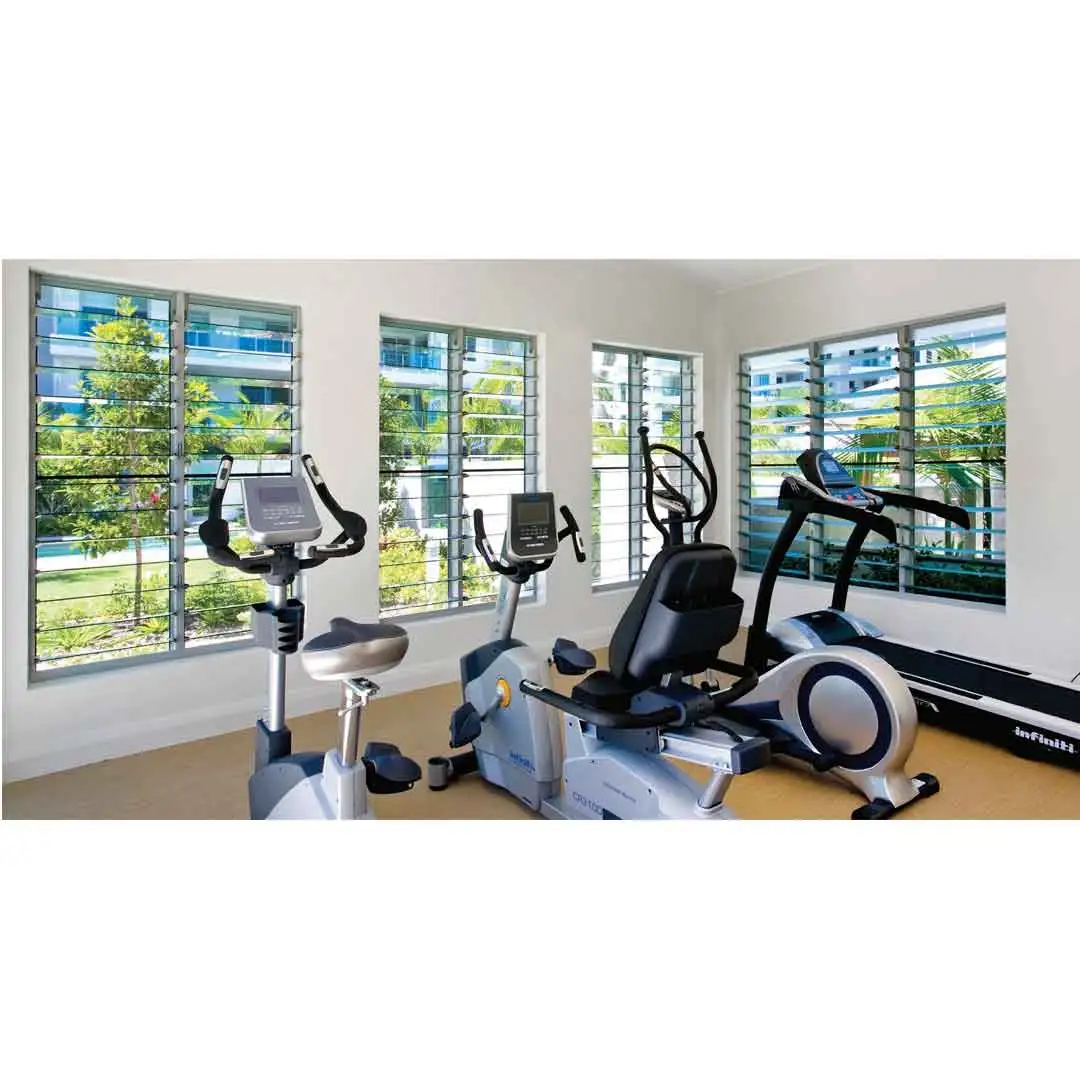
Jalousie windows, also known as louvered windows, have been a popular choice for many homeowners, especially in warm and tropical regions. As they are often available for sale in the market, it's essential to understand their advantages and disadvantages before making a purchase decision.
One of the most significant advantages of jalousie windows is their superior ventilation capabilities. The design consists of multiple horizontal slats that can be adjusted to control the amount of air entering the room. By opening the slats fully, a large volume of fresh air can flow through, creating a natural cross - ventilation effect. This is particularly beneficial in hot and humid climates, as it helps to reduce indoor humidity levels and keep the space cool and comfortable without relying solely on air - conditioning.
Jalousie windows offer great flexibility in controlling natural light. Homeowners can adjust the angle of the slats to allow just the right amount of sunlight into the room. Whether it's bright morning sunlight or the soft glow of the afternoon, the slats can be positioned to filter out harsh rays while still providing a pleasant, diffused light. This feature not only enhances the aesthetic appeal of the interior but also helps to reduce glare on electronic devices and furniture.
Compared to some other types of windows, jalousie windows are relatively inexpensive. Their simple design and construction make them more affordable to manufacture, which is often reflected in their sale price. This makes them an attractive option for budget - conscious homeowners who still want to improve the functionality and appearance of their homes. Additionally, the installation process is usually straightforward, which can further reduce the overall cost.
Jalousie windows can add a unique and tropical touch to a home's exterior and interior. They are commonly associated with coastal and beach - style architecture, but they can also complement other design styles. The horizontal slats create a distinct visual pattern that can enhance the curb appeal of a property. Inside, they can contribute to an open and airy atmosphere, making the space feel more inviting.
One of the main drawbacks of jalousie windows is their relatively poor insulation properties. The gaps between the slats, even when closed, allow air to leak in and out, which can lead to energy inefficiency. In colder climates, this means that heat can escape during the winter, increasing heating costs. In warmer climates, cool air from air - conditioning can leak out, making it more difficult to maintain a comfortable indoor temperature.
Jalousie windows are not the most secure option. The design makes them relatively easy to break into compared to other window types. Since the slats are often made of thin glass or plastic, they can be easily shattered, providing an entry point for intruders. Additionally, the adjustable slats can be manipulated from the outside in some cases, further compromising security.
The moving parts of jalousie windows, such as the hinges and mechanisms that control the slats, can be prone to wear and tear over time. Exposure to harsh weather conditions, such as strong winds and heavy rain, can also cause damage to the slats and the frame. This may result in the need for frequent repairs or replacements, which can add to the long - term cost of owning these windows.
When it rains, jalousie windows are more likely to experience water leakage compared to other window styles. The gaps between the slats can allow water to seep into the interior, especially during heavy downpours or strong winds. This can lead to water damage to the walls, floors, and furniture, as well as mold and mildew growth if not addressed promptly.
Jalousie windows for sale offer several advantages, including excellent ventilation, natural light control, cost - effectiveness, and aesthetic appeal. However, they also come with significant disadvantages such as poor insulation, limited security, durability issues, and water leakage. Homeowners considering purchasing jalousie windows should carefully weigh these pros and cons based on their specific needs, climate, and budget. By doing so, they can make an informed decision that will enhance the comfort and functionality of their homes.